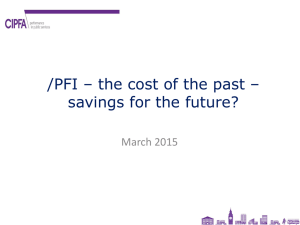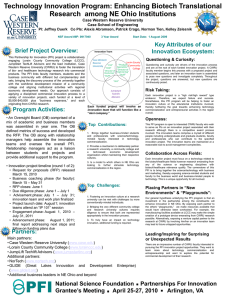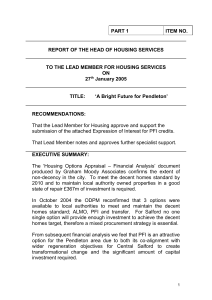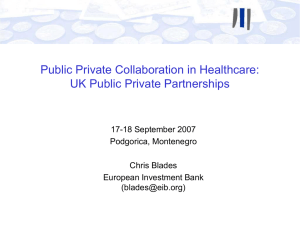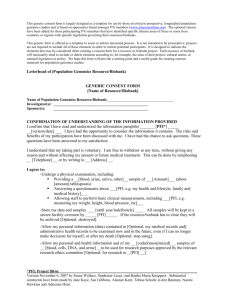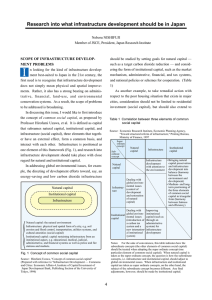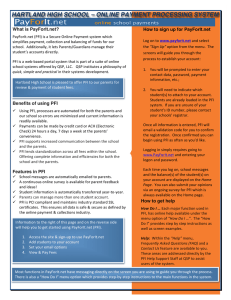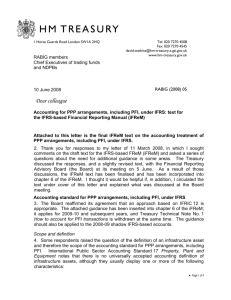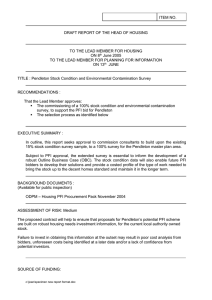Competitive tendering and public private partnerships
advertisement
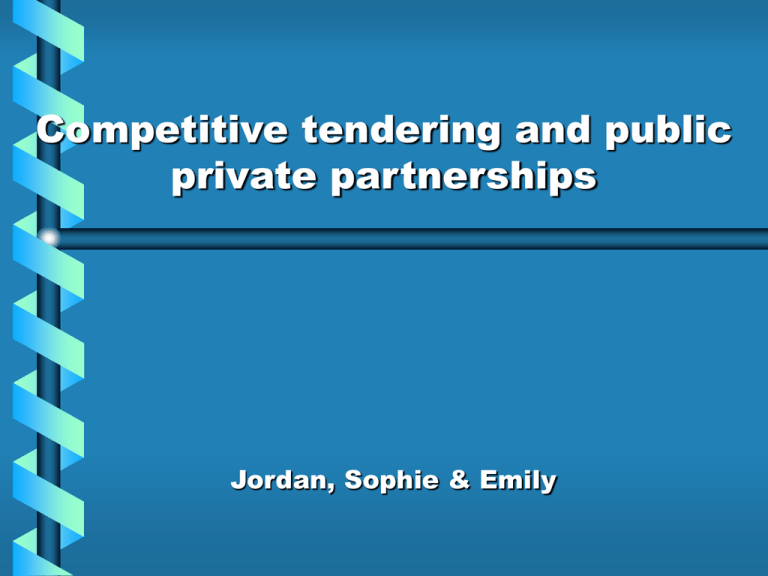
Competitive tendering and public private partnerships Jordan, Sophie & Emily What is it? The Private Finance Initiative (PFI) is the method of funding used to finance Public and Private Partnerships (PPP). It is the Government’s favourite way of funding projects such as new hospitals. For example, the Labour government financed 15 major PFI hospital schemes in England and 3 in Scotland. Who’s involved in the scheme? PFI operates with a group of companies including a financial backer, a construction company and a management contractor. The group agree a contract to build and maintain a hospital over a period of time. The NHS agree to pay a fixed annual fee to use the hospital. If the NHS decides it no longer needs the hospital, it must continue payment of the agreed fee until the contract’s expiration. Who works for who? In a PPP hospital, the NHS will employ the medical staff. Catering, porters, security and maintenance staff will be employed by an outside contractor. Crucially, medical provision will remain free, however patients will have the option of paying for better food or a private room. Benefits? The Government can have hospitals built without the high costs being met out of current taxation or cuts in services elsewhere. The Government refuses to diverge the cost of PFI contracts, citing ‘commercial confidentiality’. However, the profits made by private consortiums in other PFI contracts show that 200% plus is not unusual. Disadvantages? PFI’s will cost taxpayers far more in the longterm. The companies building the hospitals have to borrow at higher rates than the Government can and will make a profit. Both these things will be reflected in higher fees. They may also cut costs to create higher profits, and this may result in inferior provision. Another concern with PFI contracts is that medical staff may find the developments more commercially driven than medically driven. Profitable activities may take more priority over the actual needs of the local community. Non medical staff may find pay and conditions squeezed in the interest of saving money and this will affect morale and efficiency. Recent Example In the UK, two-thirds of the London Underground PPP was taken back into public control in July 2007 after only 4 and a half years at an estimated cost of £2 billion The remaining one-third was taken back into public control in May 2010 after 7 and a half years for a purchase price of £310m. The Government had paid advisers £180m for structuring, negotiating and implementing the PPP and had reimbursed £275m of bid costs to the winning bidders

